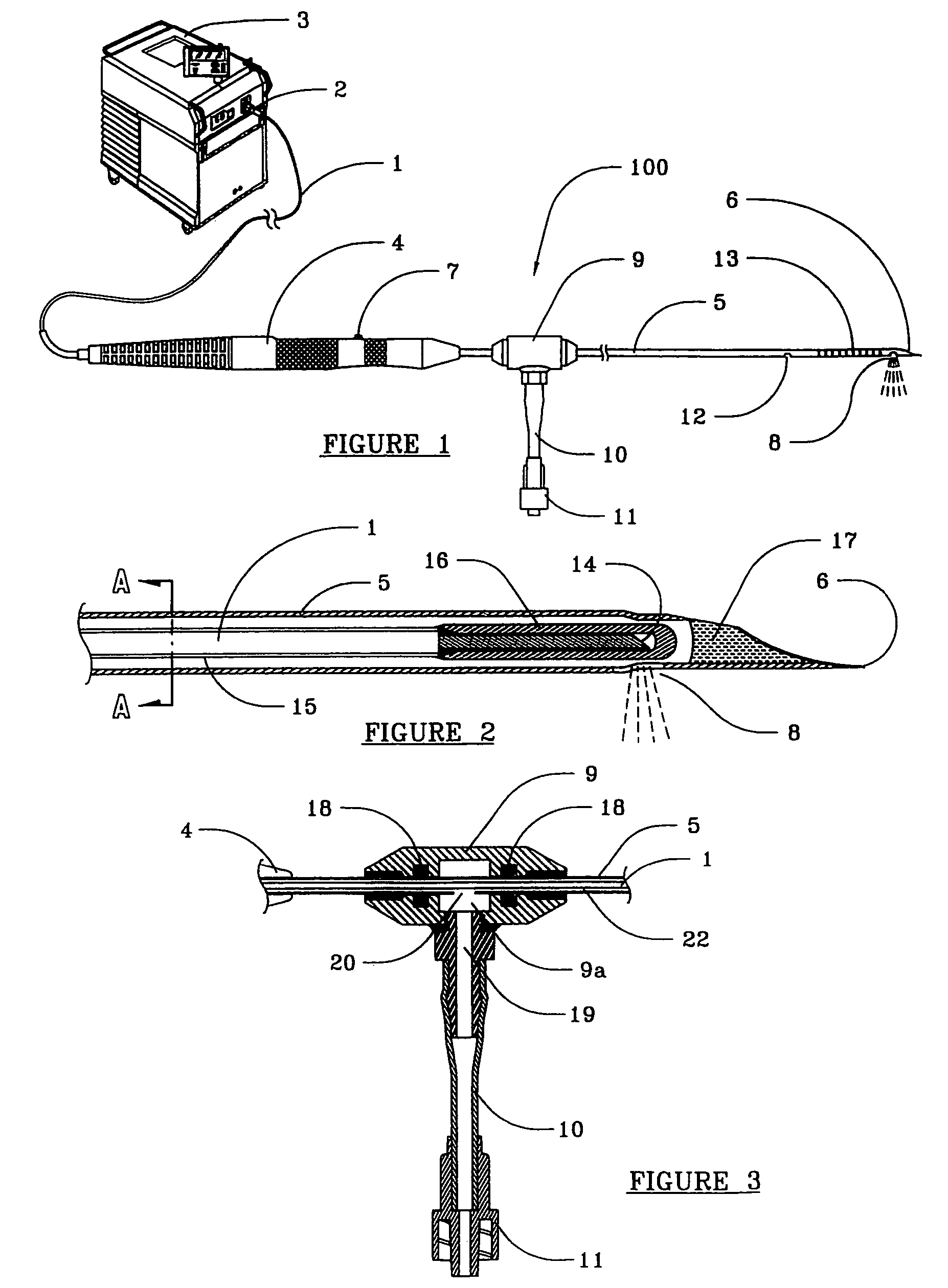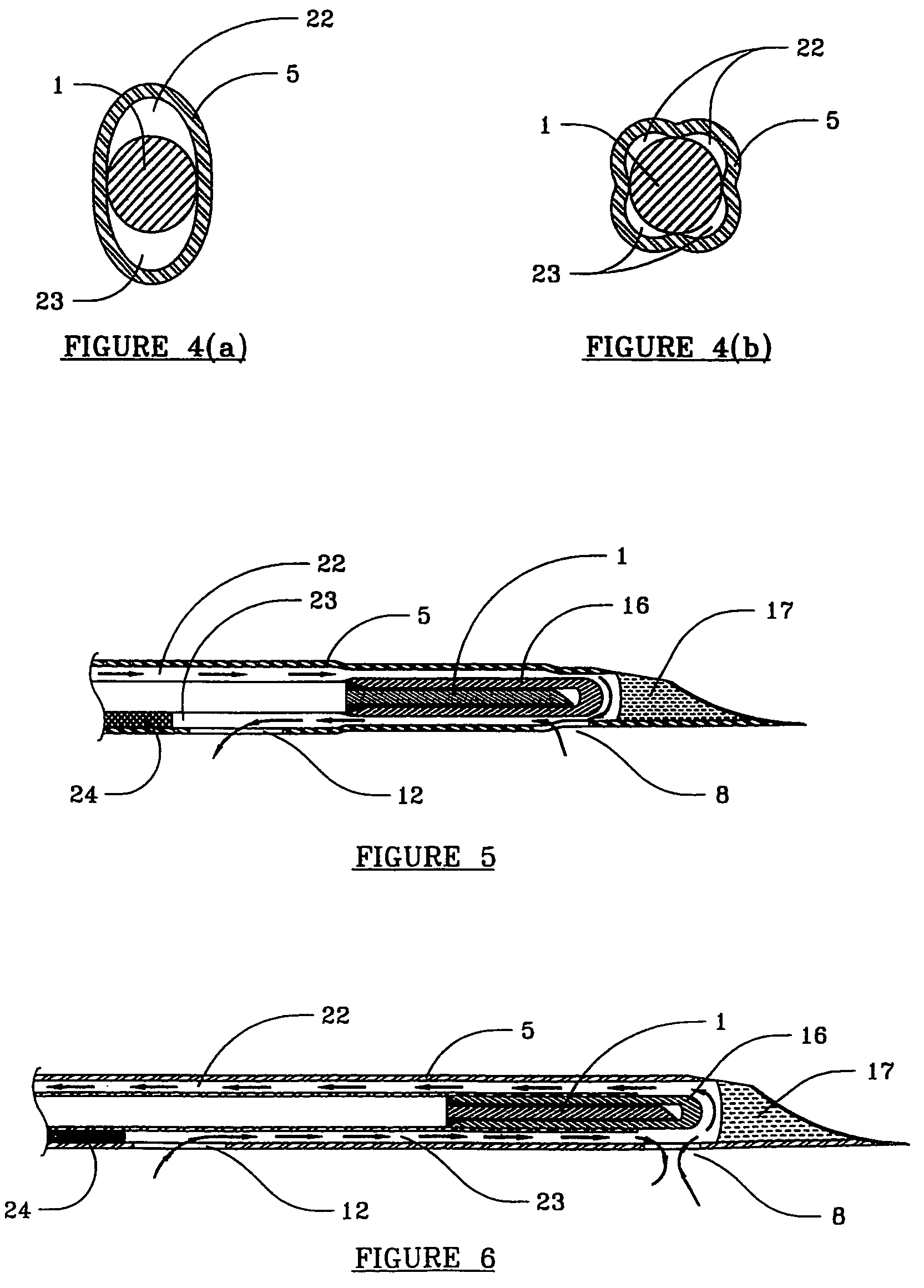Devices and methods for directed, interstitial ablation of tissue
a tissue and interstitial ablation technology, applied in the field of directed, interstitial ablation of tissue, can solve the problems of worldwide problems, requiring general anesthesia and and requiring an hour or more of operating room time. , to achieve the effect of preventing tissue adhesion, avoiding tissue excess coagulation, and facilitating tissue penetration
- Summary
- Abstract
- Description
- Claims
- Application Information
AI Technical Summary
Benefits of technology
Problems solved by technology
Method used
Image
Examples
Embodiment Construction
[0045]While this invention is susceptible of embodiment in many different forms, specific embodiments are shown in the drawings and are described herein in detail, with the understanding that the present disclosure is to be considered as an exemplification of the principles of the invention and is not to be limited to the specific embodiments illustrated.
[0046]An apparatus aspect of the present invention is a medical catheter device for delivering localized energy to a tissue in a patient's body in an amount sufficient to ablate or vaporize the tissue. In use, the catheter device is suitably positioned within a patient's body by insertion through a body lumen, cavity or surgically created passageway, and advanced to a predetermined site within the body. The device of the present invention is particularly suited for the vaporization of prostate tissue and involves the use of laser energy.
[0047]FIGS. 1-3 illustrate one embodiment of a catheter device 100 constructed in accordance with...
PUM
 Login to View More
Login to View More Abstract
Description
Claims
Application Information
 Login to View More
Login to View More - R&D
- Intellectual Property
- Life Sciences
- Materials
- Tech Scout
- Unparalleled Data Quality
- Higher Quality Content
- 60% Fewer Hallucinations
Browse by: Latest US Patents, China's latest patents, Technical Efficacy Thesaurus, Application Domain, Technology Topic, Popular Technical Reports.
© 2025 PatSnap. All rights reserved.Legal|Privacy policy|Modern Slavery Act Transparency Statement|Sitemap|About US| Contact US: help@patsnap.com



